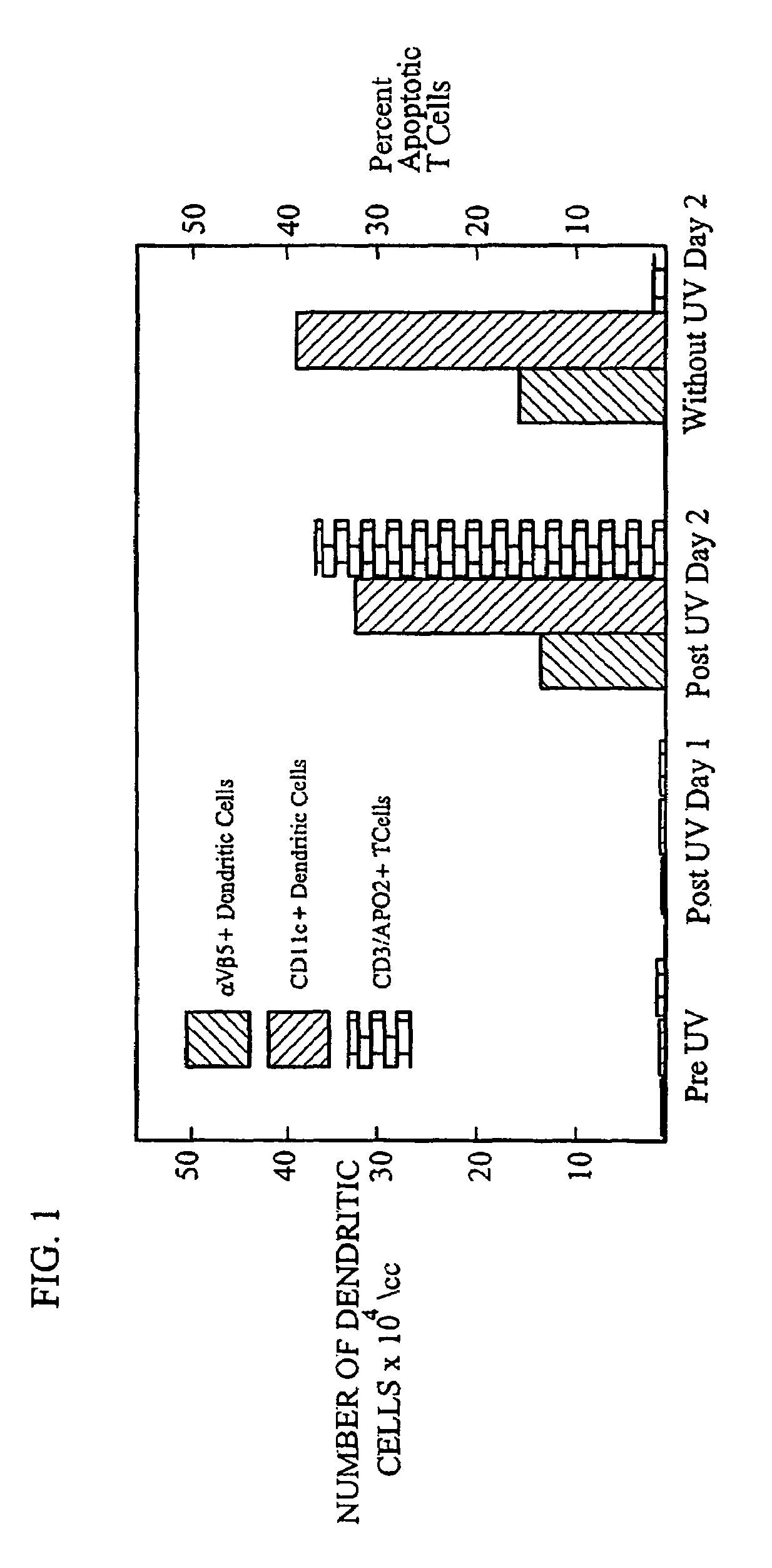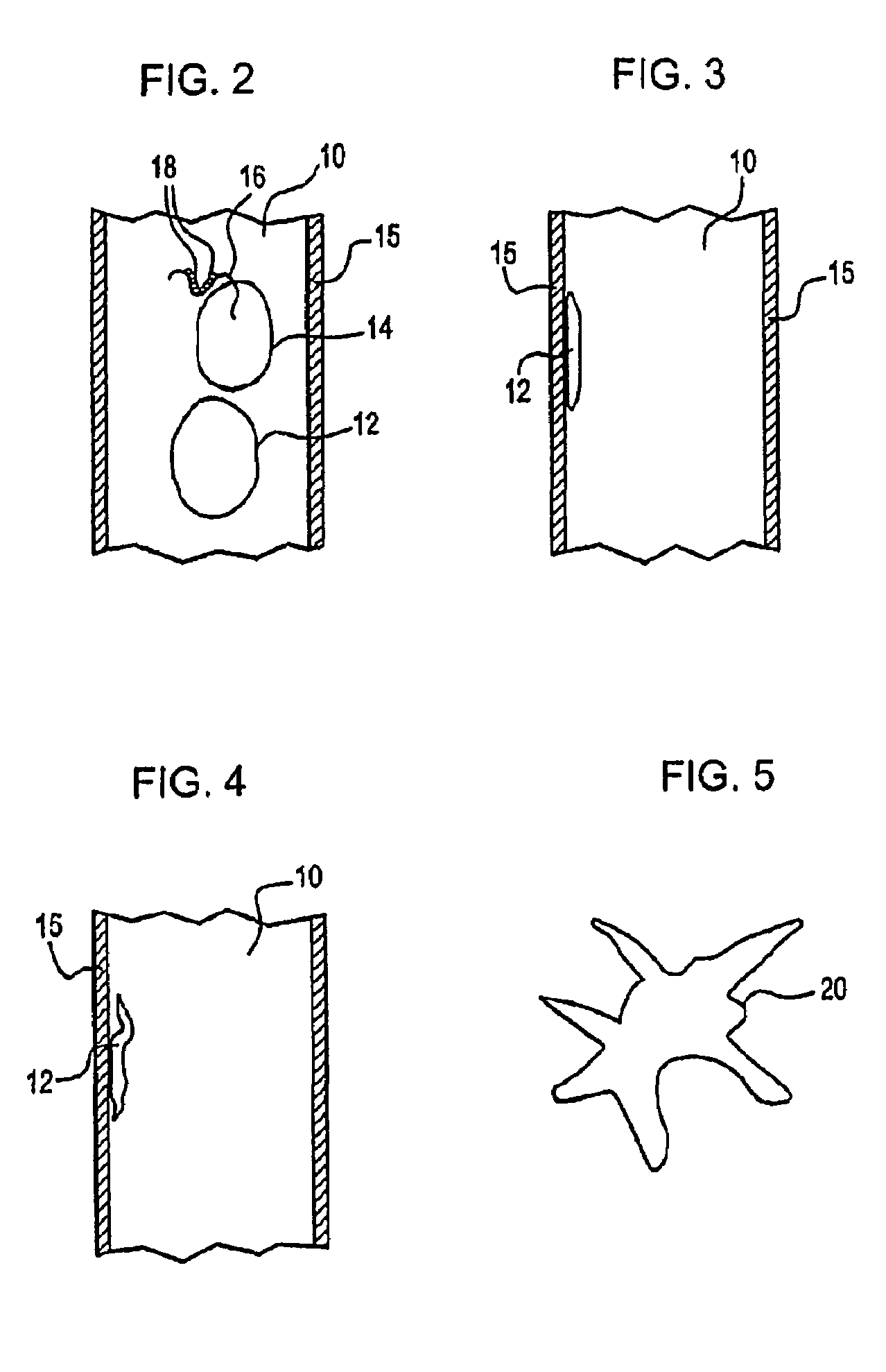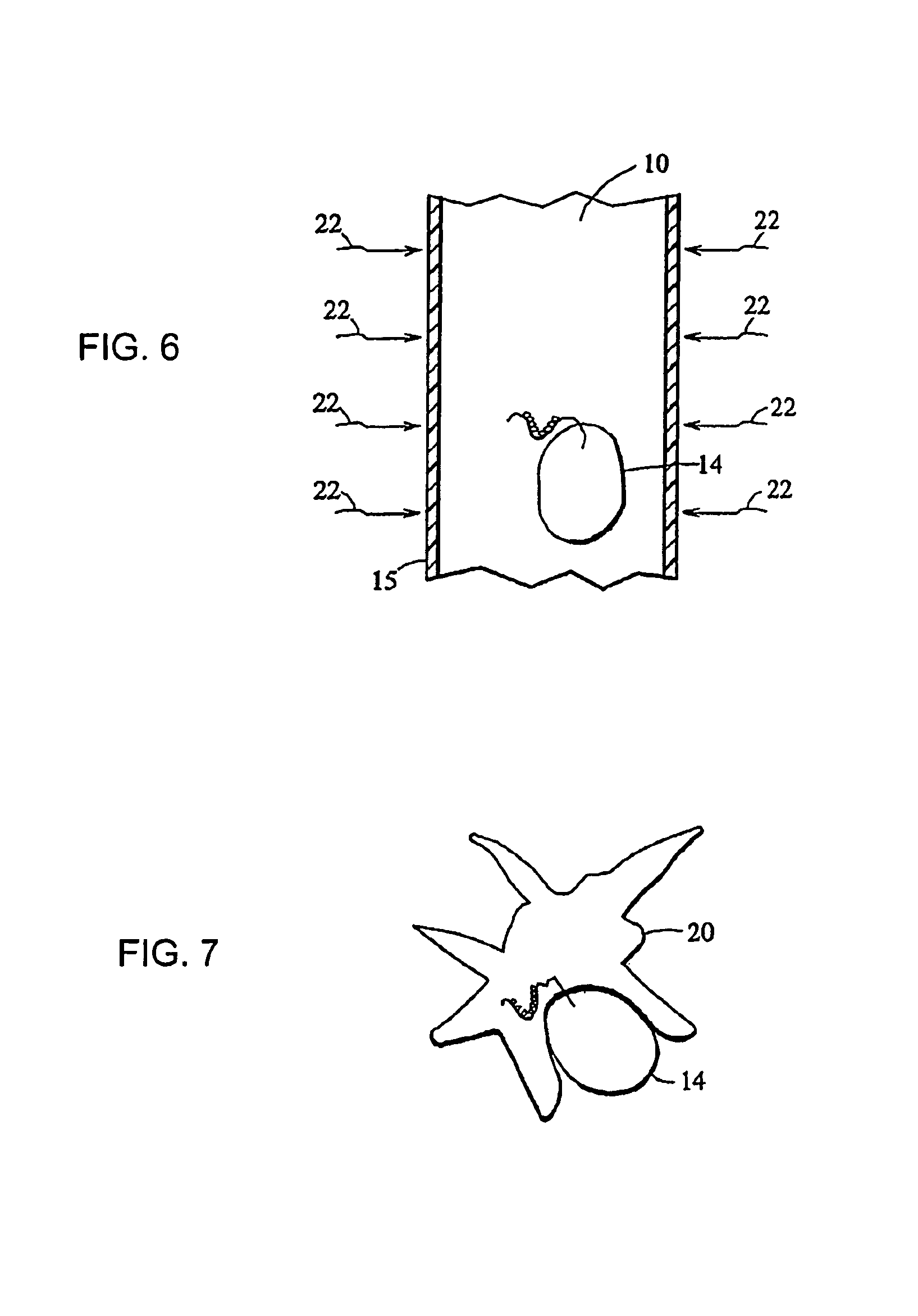Methods for inducing the differentiation of monocytes into functional dendritic cells and immunotherapeutic compositions including such dendritic cells
a technology of dendritic cells and monocytes, which is applied in the direction of immunotherapy, drug compositions, immunological disorders, etc., can solve the problems of inability to produce and present multiple tumor antigens, laborious and expensive procedures, and extensive ex vivo cellular manipulations, so as to enhance the uptake and processing of apoptotic disease effector agents, the effect of increasing the likelihood of apoptotic cells
- Summary
- Abstract
- Description
- Claims
- Application Information
AI Technical Summary
Benefits of technology
Problems solved by technology
Method used
Image
Examples
Embodiment Construction
[0034]As noted above, monocyte differentiation is initiated by exposing the monocytes contained in an extracorporeal quantity of a subject's blood to the physical forces resulting from the sequential adhesion and release of the monocytes on plastic surfaces, such as the surfaces of the channels of a conventional photopheresis device. In one embodiment of the invention, a white blood cell concentrate is prepared in accordance with standard leukapheresis practice using a leukapheresis / photopheresis apparatus of the type well known to those skilled in the art. The white blood cell concentrate includes monocytes, lymphocytes and some red blood cells and platelets. Typically, up to two billion white blood cells are collected during leukapheresis. Assuming that monocytes comprise from about 2% to about 50% of the total white blood cell population collected, approximately 40 million to 1 billion monocytes are present in the white blood cell concentrate.
[0035]Following separation by leukaph...
PUM
| Property | Measurement | Unit |
|---|---|---|
| distance | aaaaa | aaaaa |
| distance | aaaaa | aaaaa |
| volume | aaaaa | aaaaa |
Abstract
Description
Claims
Application Information
 Login to View More
Login to View More - R&D
- Intellectual Property
- Life Sciences
- Materials
- Tech Scout
- Unparalleled Data Quality
- Higher Quality Content
- 60% Fewer Hallucinations
Browse by: Latest US Patents, China's latest patents, Technical Efficacy Thesaurus, Application Domain, Technology Topic, Popular Technical Reports.
© 2025 PatSnap. All rights reserved.Legal|Privacy policy|Modern Slavery Act Transparency Statement|Sitemap|About US| Contact US: help@patsnap.com



